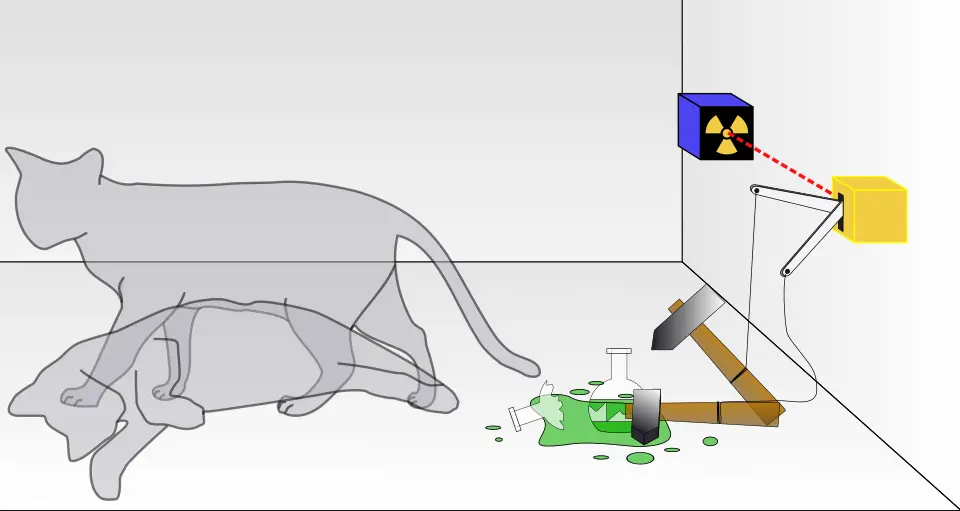Imagine a cat. It’s inside a sealed box. You can’t see it. You don’t hear a sound. According to quantum mechanics, until you open the box, the cat is both dead and alive at the same time.
Does it sound absurd? Looks like something out of science fiction. right? Yet this bizarre idea has become one of the most powerful illustrations of quantum theory’s strangest truths. Welcome to the world of Schrödinger’s Cat, a thought experiment that forces us to rethink the very nature of reality, observation, and the limits of knowledge.
Where It All Began
In the early 20th century, quantum physics emerged as a groundbreaking theory to explain the behavior of particles at the subatomic level. But it was weird. Unlike classical physics, which deals in certainties — positions, velocities, causes and effects — quantum physics deals in probabilities.
Enter Erwin Schrödinger, a Nobel-winning physicist and one of the fathers of quantum mechanics. In 1935, he proposed a thought experiment not to prove quantum theory right, but to show how ridiculous its interpretation might be if taken to extremes.
It was his way of saying: “Look how crazy this gets if we follow the math literally.”
The Setup
Here’s the scenario:
- Place a cat in a sealed box.
- Inside the box, there’s also a tiny amount of radioactive material, which has a 50% chance of decaying in one hour.
- If it decays, a Geiger counter detects it and triggers a hammer that breaks a flask of poison, killing the cat.
- If the atom doesn’t decay, the cat lives.
Now (and here’s the twist ) in the realm of quantum mechanics, until the box is opened, the radioactive atom is in a superposition of decayed and not decayed. Therefore, the cat, too, is in a superposition: both dead and alive.
It’s not that we don’t know which it is. It’s that it is both — until observed.
Superposition
To understand why Schrödinger’s Cat matters, we need to grasp superposition, one of the cornerstones of quantum mechanics.
A quantum particle (like an electron, or a photon) doesn’t exist in one single, definite state. Instead, it exists in a combination of all possible states at once. When we observe or measure it, this superposition collapses into one of those possibilities.
Think of a coin spinning in the air — it’s not just heads or tails, but a blur of both. It’s only when you catch it and look that it becomes one or the other. That blur is superposition. But in quantum physics, it’s not metaphorical. It’s real.
Schrödinger’s Message
It’s important to know: Schrödinger didn’t actually believe the cat was both dead and alive. His point was to highlight the absurdity of applying quantum rules — which work perfectly in the microscopic world — to macroscopic objects like cats.
At the time, Schrödinger and Albert Einstein were both skeptics of the emerging Copenhagen Interpretation, which claimed that observation collapses quantum states into definite realities. Schrödinger’s Cat was meant to show how illogical this seemed when extended to everyday life.
Who’s Watching Whom?
Schrödinger’s Cat leads us straight into one of the most mysterious problems in physics: the measurement problem.
If quantum systems exist in superpositions until measured, then what counts as a measurement? Is it a conscious observer? Is it any interaction with the environment? When exactly does the collapse of the wave function happen?
Some theories say the cat itself (being a conscious observer) collapses the state. Others say the Geiger counter does. Still others say the entire universe splits into two at the moment of superposition — one with a live cat, one with a dead one.
This brings us to…
The Many Worlds Interpretation
One of the boldest responses to the paradox comes from Hugh Everett, who in 1957 proposed the Many Worlds Interpretation (MWI).
In this view, the cat doesn’t collapse into one state. Instead, the universe splits into two:
- In one universe, the cat is dead.
- In another, the cat is alive.
Every quantum event spawns a branching of the universe. Infinite versions of you, reading infinite versions of this article, in infinite realities.
It sounds fantastical, but the MWI is taken seriously by many physicists today.
Quantum Decoherence
Another approach, decoherence, offers a way out of the paradox without invoking parallel universes. It suggests that as soon as a quantum system interacts with its environment (air, light, a detector), it effectively “chooses” a state — not because it’s being observed consciously, but because it loses its quantum coherence.
In short:
The cat appears dead or alive not because we look, but because nature itself forces the choice.
Legacy and Pop Culture
Schrödinger’s Cat has become a cultural symbol — a metaphor for uncertainty, ambiguity, and duality. It’s been featured in:
- TV shows like The Big Bang Theory and Rick and Morty
- Literature, music, video games, and art
- Countless memes and internet jokes
For physicists, it remains a serious point of discussion. For educators, it’s a powerful teaching tool. For students and thinkers, it’s a gateway into the weird world of quantum theory.
The Cat That Made Us Question Reality
Schrödinger’s Cat is more than a quirky thought experiment. It’s a mirror held up to our assumptions about reality. It shows that what we observe might not be what exists, and that our act of looking — of measuring — might shape the world in ways we still don’t fully understand.
It challenges us to think deeper about what it means to know, to see, and to exist. And in doing so, it bridges science, philosophy, and imagination in a way few ideas ever have.
So, is the cat dead? Is it alive?
In the quantum world, the answer may be: yes.

